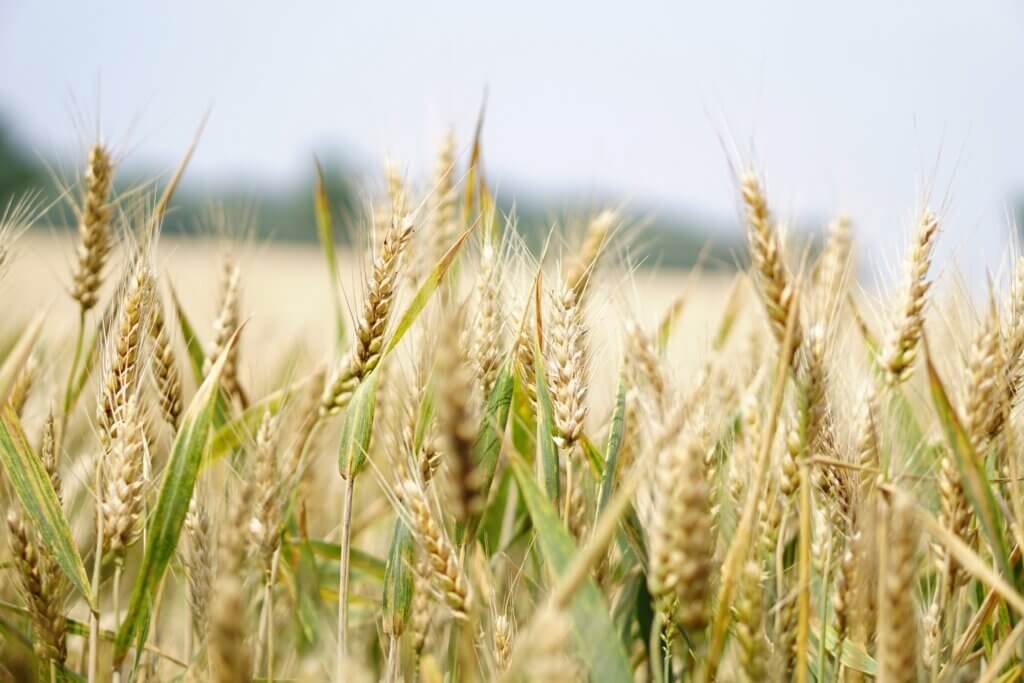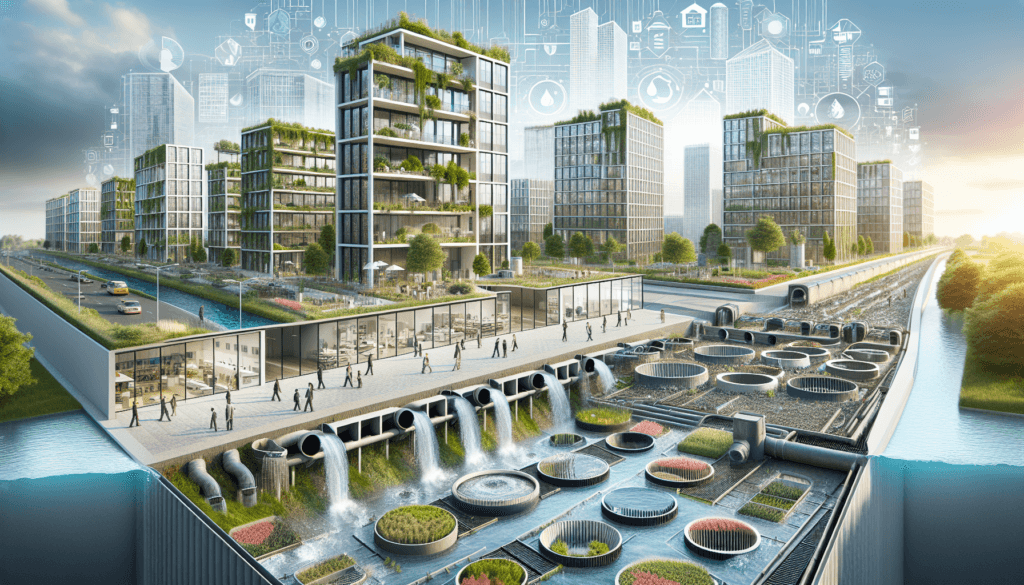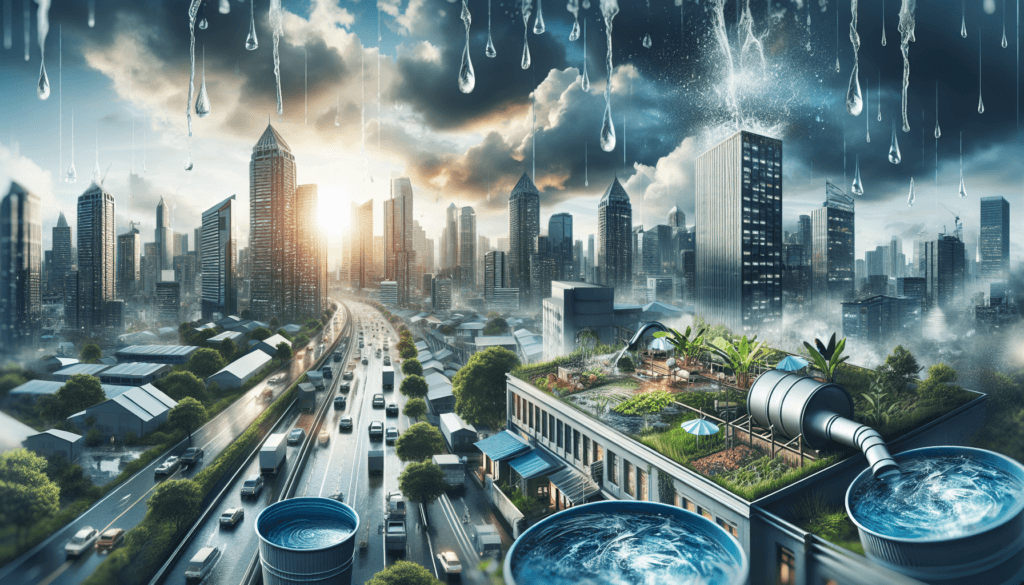Imagine having a sustainable way to save money, conserve water, and contribute to a greener city all at once. Well, look no further, because “The Ultimate Guide To Harvesting Rainwater In The City” has got you covered. In this comprehensive article, you will discover practical tips and tricks on how to efficiently collect and utilize rainwater within the urban landscape. Whether you’re a seasoned urban dweller or a newbie to the concrete jungle, this guide will equip you with the knowledge and inspiration to make a positive impact on both your wallet and the environment. So grab your umbrella and get ready to embark on a rainwater harvesting adventure like no other!
Chapter 1: Understanding Rainwater Harvesting
The Importance of Rainwater Harvesting
Rainwater harvesting is becoming increasingly important as cities face water scarcity and the need for sustainable water management. By capturing and storing rainwater, we can reduce our dependence on traditional water sources and alleviate the strain on municipal water supplies. Rainwater harvesting is a simple yet effective way to ensure a reliable water source, especially during times of drought or water restrictions.
Benefits of Rainwater Harvesting
There are numerous benefits to implementing rainwater harvesting systems in urban areas. Firstly, it can significantly reduce water bills by utilizing free and abundant rainwater for various purposes. Additionally, rainwater is naturally soft and free from many contaminants found in groundwater, making it suitable for irrigation and other non-potable uses. By reducing the demand for treated water, rainwater harvesting also enables municipalities to conserve resources and lower energy consumption.
Environmental Considerations
Rainwater harvesting systems have a positive impact on the environment by reducing stormwater runoff and mitigating the burden on drainage infrastructure. Rainwater, when collected and stored, can prevent flooding and erosion in urban areas. Moreover, utilizing rainwater for irrigation can reduce the need for chemical fertilizers and potential runoff pollution. By implementing rainwater harvesting practices, we can make our cities more resilient and sustainable.
Legal Considerations
Before implementing a rainwater harvesting system, it is crucial to consider legal requirements and regulations. Different jurisdictions may have specific laws regarding the collection, storage, and use of rainwater. Some areas require permits or impose restrictions on the volume of rainwater that can be harvested. It is essential to familiarize yourself with the local regulations to ensure compliance and avoid any legal issues.
Chapter 2: Assessing the Feasibility of Rainwater Harvesting in the City
Evaluating Rainfall Patterns
Understanding local rainfall patterns is crucial for assessing the feasibility of rainwater harvesting in the city. It is essential to analyze historical rainfall data to determine the average annual precipitation and identify the months with the highest rainfall. This information will help you estimate the potential water yield and decide on the suitable scale of your rainwater harvesting system.
Determining Water Needs
Assessing your water needs is vital to design an efficient rainwater harvesting system. Start by calculating the average daily water consumption for different purposes such as irrigation, toilet flushing, or laundry. By determining the water demand, you can accurately size your storage capacity and plan your collection methods accordingly.
Analyzing Rooftop or Surface Area
The size of the rooftop or surface area available for rainwater collection plays a significant role in the feasibility of rainwater harvesting. Measure the total area that can be utilized for rainwater collection, including rooftops, driveways, or any impermeable surfaces. This will help you estimate the potential volume of rainwater that can be captured and define the appropriate collection methods.
Assessing Water Collection Methods
There are various methods to collect rainwater, such as rooftop capture, surface runoff harvesting, or rain gardens. Evaluate each method considering factors like cost, efficiency, and suitability to your specific location. The choice of collection method will depend on the available space, the volume of rainfall, and your water needs.

Chapter 3: Types of Rainwater Collection Systems
Basic Rain Barrel System
A basic rain barrel system is the simplest and most cost-effective way to get started with rainwater harvesting. It involves collecting rainwater from the downspouts into a barrel or tank. The collected water can be used for tasks like watering plants or washing cars. Rain barrels typically have a spigot for easy access to the stored water.
Cisterns and Storage Tanks
For larger-scale rainwater harvesting, cisterns and storage tanks are commonly used. These systems can store a significant volume of rainwater for various purposes, including irrigation or household use. Cisterns and storage tanks come in different sizes and materials, allowing for customization based on water needs and available space.
Green Roofs and Rain Gardens
Green roofs and rain gardens are innovative rainwater harvesting techniques that integrate vegetation into the urban landscape. Green roofs use specially designed layers to capture and store rainwater, reducing runoff and providing insulation for buildings. Rain gardens are landscaped areas designed to collect rainwater, allowing it to infiltrate the ground slowly. Both methods enhance the aesthetic appeal of the city while promoting sustainable water management.
Permeable Pavement Systems
Permeable pavement systems are another way to effectively manage rainwater in urban areas. These systems utilize porous materials that allow rainwater to filter through the pavement instead of flowing into storm drains. Permeable pavements reduce runoff, improve water quality, and prevent flooding by allowing rainwater to recharge the groundwater table.
Chapter 4: Steps to Install a Rainwater Harvesting System
Calculating Water Storage Capacity
To determine the appropriate water storage capacity for your rainwater harvesting system, consider factors such as average rainfall, water needs, and available space. Calculate the maximum amount of rainwater that can be collected during a rain event and ensure your storage capacity is sufficient to meet your water demand.
Selecting Appropriate Collection Method
Based on your assessment of rooftop or surface area and water collection needs, choose the most suitable collection method. Consider factors like cost, maintenance requirements, and local regulations. Whether it’s a rain barrel system, cisterns, or permeable pavement, selecting the right collection method is crucial for the success of your rainwater harvesting system.
Installing Gutters and Downspouts
Proper installation of gutters and downspouts is essential to ensure efficient rainwater collection. Make sure the gutters are clean, free from debris, and properly sloped to direct water towards the downspouts. Install downspout diverters or elbows to direct the rainwater into the collection system while allowing overflow during heavy rainfall.
Plumbing and Filtration Systems
Plumbing and filtration systems are essential components of rainwater harvesting systems. These systems ensure that the harvested rainwater is filtered and safe to use. Install filters, screens, and first-flush diverter systems to remove debris and pollutants from the collected water. Proper plumbing will ensure a smooth flow of harvested rainwater to its intended use.

Chapter 5: Maintenance and Management of Rainwater Harvesting Systems
Regular Inspections
Regular inspections are necessary to ensure the optimal performance of your rainwater harvesting system. Check for any signs of leaks, clogs, or damage to gutters, downspouts, or storage tanks. Inspect filters and screens to ensure they are clean and functioning properly. Regular maintenance will help prevent potential issues and prolong the lifespan of your system.
Cleaning and Maintenance
Periodic cleaning of gutters, downspouts, and storage tanks is crucial to maintain water quality and system efficiency. Remove any debris or sediment that may accumulate in the collection system. Clean filters and screens to ensure proper water filtration. Regular maintenance will prevent clogs and ensure the harvested rainwater remains clean and usable.
Water Quality Testing
Regular water quality testing is essential to ensure the safety of the harvested rainwater. Test for pathogens, contaminants, and chemical composition to ensure compliance with health and safety standards. If any issues are detected, take necessary measures to improve water quality or consult with a professional for guidance.
Winterization
Proper winterization is necessary to protect your rainwater harvesting system during cold months. Drain the system and disconnect any exposed pipes or hoses to prevent freezing and damage. Insulate storage tanks or cisterns to maintain water temperature and prevent freezing. Winterizing your system will ensure it remains in good condition and ready for use once the warmer seasons return.
Chapter 6: Using Harvested Rainwater in the City
Outdoor Applications
Harvested rainwater can be used for a wide range of outdoor applications in the city. It is ideal for watering plants, lawns, and gardens, reducing the demand for treated water. Rainwater can also be used for washing cars or outdoor cleaning tasks, helping to conserve potable water resources.
Indoor Applications
While harvested rainwater may not be suitable for drinking, it can be utilized for various indoor applications in the city. It can be used for toilet flushing, which accounts for a significant portion of water usage in households and commercial buildings. Rainwater can also be used for laundry or cleaning purposes, reducing the reliance on treated water for these tasks.
Irrigation Systems
One of the primary uses of harvested rainwater is irrigation. Whether for residential gardens or larger-scale agricultural purposes, rainwater is an excellent source for irrigation. By utilizing rainwater for irrigation, we can reduce the demand for groundwater or treated water, conserving valuable resources and promoting sustainable agriculture practices.
Toilet Flushing and Laundry
Harvested rainwater can be particularly beneficial for toilet flushing and laundry purposes in the city. Installing dual plumbing systems that separate non-potable water sources, such as rainwater, from the potable water supply can significantly reduce water usage. Utilizing rainwater for these purposes can lead to substantial water savings and contribute to overall water conservation efforts.

Chapter 7: Promoting Rainwater Harvesting in the City
Educating the Community
Educating the community about the benefits of rainwater harvesting is crucial for widespread adoption and success. Conduct workshops or seminars to raise awareness about the importance of sustainable water management and the potential of rainwater harvesting. Provide information on system installation, maintenance, and available incentives to encourage residents and businesses to implement rainwater harvesting practices.
Government Incentives and Policies
Government incentives and policies play a significant role in promoting rainwater harvesting in cities. Governments can offer financial incentives, tax breaks, or rebates to individuals and businesses that adopt rainwater harvesting systems. Implementing policies that require rainwater harvesting in new constructions or providing grants for system installation can further encourage the adoption of these practices.
Collaboration with Local NGOs
Collaboration with local non-governmental organizations (NGOs) can enhance the promotion of rainwater harvesting in the city. NGOs often have expertise in sustainable water management and community outreach. Partnering with these organizations can help facilitate education programs, provide technical assistance, and create community-driven rainwater harvesting projects.
Community Outreach Programs
Engaging the community through outreach programs is an effective way to promote rainwater harvesting. Organize events such as community workshops, neighborhood clean-ups, or school awareness campaigns to educate residents about the benefits of rainwater harvesting. Encourage community participation in rainwater harvesting projects, fostering a sense of collective responsibility for sustainable water management.
Chapter 8: Case Studies of Successful Rainwater Harvesting Projects
Rainwater Harvesting in Public Buildings
Many public buildings have implemented rainwater harvesting systems to reduce water consumption and demonstrate sustainable practices. Examples include schools, libraries, and government buildings. These projects not only provide a tangible example of rainwater harvesting but also inspire and educate the community about the feasibility and benefits of such systems.
Residential Rainwater Harvesting Systems
Residential rainwater harvesting systems have gained popularity among homeowners in urban areas. These systems vary in size and complexity, ranging from simple rain barrels to comprehensive cistern systems. Successful residential projects showcase how rainwater harvesting can effectively reduce water bills, provide a sustainable water source, and promote eco-friendly lifestyles.
Commercial Applications
Commercial buildings, such as hotels, shopping malls, and restaurants, can greatly benefit from rainwater harvesting systems. These systems can be integrated into the building’s design and provide a reliable water source for various purposes, including landscaping, cleaning, or toilet flushing. Successful commercial applications demonstrate the potential for significant water savings and sustainable water management in urban areas.
Community-driven Projects
Community-driven rainwater harvesting projects involve collective efforts to implement large-scale systems for the benefit of a specific community. These projects may include installing rainwater harvesting systems in public spaces, parks, or community gardens. The success of these initiatives highlights the power of community collaboration and the collective impact of rainwater harvesting in creating sustainable urban environments.

Chapter 9: Addressing Common Challenges and Troubleshooting
Overflow and Drainage Issues
Overflow and drainage issues can occur in rainwater harvesting systems, especially during heavy rainfall events. To address these challenges, it is essential to properly size your storage capacity and design an overflow system to redirect excess water. Consider incorporating diversion mechanisms or using the overflow for stormwater management purposes to avoid potential flooding issues.
Water Quality Concerns
Ensuring water quality is a common concern in rainwater harvesting systems. Proper system design, regular maintenance, and appropriate filtration systems can help mitigate water quality issues. Implement first-flush diverters, filters, and screens to remove sediment, debris, and potential contaminants. Regular water quality testing will provide reassurance and help identify any necessary improvements.
System Malfunctions
System malfunctions can occur due to various factors, including clogged gutters, damaged downspouts, or malfunctioning pumps. Regular inspections and maintenance can help identify and address system malfunctions promptly. Periodically check valves, pipes, and other components to ensure they are functioning correctly. Addressing system malfunctions promptly will help maintain the efficiency and effectiveness of your rainwater harvesting system.
Permitting and Code Compliance
Obtaining necessary permits and ensuring compliance with local codes and regulations can be a challenge when implementing rainwater harvesting systems. It is essential to familiarize yourself with the specific requirements in your area and obtain the necessary permits before installation. Collaborating with professionals or consulting local authorities will ensure compliance and avoid any legal issues.
Chapter 10: Future Trends and Innovations in Rainwater Harvesting
Rainwater Harvesting Technology Advancements
Advancements in rainwater harvesting technology are continually being developed to enhance system efficiency and user-friendliness. These advancements include improved filtration systems, smart monitoring capabilities, and integrated controls. By harnessing technology, rainwater harvesting systems can become more efficient, integrated, and accessible to a wider range of users.
Integration with Smart Cities
The integration of rainwater harvesting systems with smart city infrastructure is an emerging trend. Smart technologies can optimize rainwater collection, storage, and distribution processes. Utilizing real-time data, sensors, and automation can enhance water management efficiency while integrating rainwater harvesting as a key component of sustainable urban development.
Research and Development Efforts
Ongoing research and development efforts are focused on addressing the challenges and improving the effectiveness of rainwater harvesting systems. These efforts aim to develop new materials, optimize collection methods, and explore innovative ways to utilize and store harvested rainwater. Continued research in this field will drive advancements and make rainwater harvesting even more accessible and beneficial.
Adapting to Climate Change
As climate change brings about increasingly unpredictable weather patterns, adapting rainwater harvesting practices becomes essential. Systems need to be designed to withstand extreme weather events and accommodate changing rainfall patterns. This may involve increasing storage capacity, improving collection infrastructure, or modifying system operations to ensure continued resilience and effectiveness in the face of climate change.
In conclusion, rainwater harvesting offers numerous benefits and opportunities for sustainable water management in urban areas. By understanding its importance, assessing feasibility, selecting appropriate systems, and ensuring proper maintenance, the city can effectively utilize harvested rainwater for a range of applications. Furthermore, promoting rainwater harvesting through education, incentives, and collaboration can enhance community engagement and foster a culture of sustainable water management. As we look towards the future, advancements in technology, integration with smart cities, and ongoing research efforts will further propel the growth and innovation of rainwater harvesting practices, ensuring a resilient and sustainable water future for our cities.



